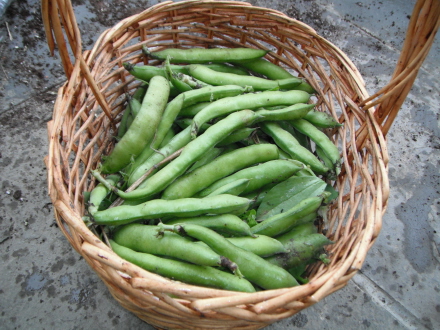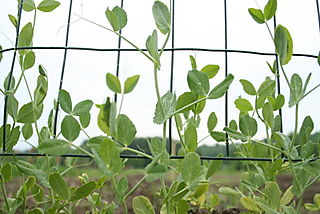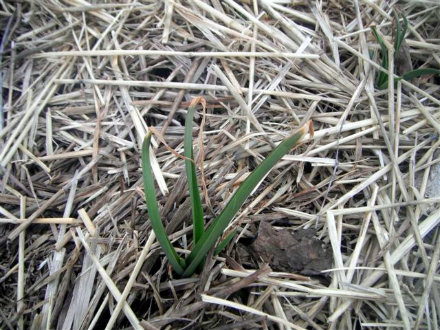AgriCulture bloggers Peter Davies and Mark Scherzer are the owners of Turkana Farms in Germantown, NY. This week Peter writes.

It was only a few days away last week, as of this writing, from St. Patrick’s Day. No, I’m not Irish. In fact, I have always tried to wear orange on that very green day. And no green beer for me. And no “Irish Eyes Are Smiling." The significance of the date to me (forever loyal to the House of Orange) is that it is the day one traditionally tries to get fava beans and peas into the ground, giving them the necessary time to grow and bear before the heat of early summer makes them wither and die. And wither and die they will, even before bearing, if they have not gotten an early start, or if unseasonably hot weather arrives. There is nothing more disappointing than seeing beautiful fava bean plants and pea vines flowering only to have them shrivel and die before producing. With our strangely evolving climate such disappointing outcomes threaten to be more and more common.

Both favas and peas are cool weather lovers and incredibly hardy, able to make a start in cold ground and withstand frosts and cold weather within reason. But as I write this, the weather has done one of its frequent about faces and, after a few days of spring-like temperatures and heavy rain, the ground is frozen once again — at least, that is, on the surface. So it will be touch and go as to whether or not the ground will be workable for planting this week. For a few planting seasons, given the uncertainties of mid-March, we have tried starting our favas and peas in the greenhouse, only moving them out as seedlings to the vegetable garden when it was clear that spring had arrived. But on last year's St Patrick’s Day, we mounted something of an experiment in planting fava and pea seeds both directly in the vegetable garden and in planting trays in the greenhouse. Much to my surprise, there seemed to be little advantage to doing the greenhouse planting. If anything the seeds sown directly outdoors, despite the ups and downs in the weather, seemed to have a better outcome ultimately. It’s now clearer to me why in my homeland, the U.K., peas and favas, known there as “broad beans," are such major vegetables. And why my grandmother would signal so many dinners with a cheerful: “Lovely peas…" or “…lovely broad beans today." The coolness and wetness of the climate there means that peas and favas are not just making dinner-table appearances as springtime vegetables but have a much longer serving season.

As I walk around the vegetable garden reconnoitering for planting beds for the favas and peas, I am struck by the starkness of the scene and not encouraged by the rock-hard earth underfoot. The only green shoots I see are in the three circular beds of garlic we set out last October. Already the garlic shoots, poking through the straw, are around 3-4" tall, about neck and neck with the daffodil shoots in the flower gardens. It gives me great pleasure to see both. And particularly to see the tiny white blooms of the clumps of snowdrops coming up here and there. I do a mental inventory of the vegetable garden: still no sign of any green in the sorrel patch, nor are the aggressive-looking red and green buds of rhubarb erupting yet. And there is not a single spear to be seen in the new bed of red asparagus we started last spring. It appears that parsley, which sometimes survives a mild winter, has not managed to survive this time.

Not all, however, is as dormant as it seems. I know there are carrots and parsnips resting beneath the straw mulch, left there in a kind of winter storage for spring consumption. And I expect the remaining leeks, now invisible beneath the straw, to make a late spring revival before they quickly go to seed. I anticipate a last burst of collard leaves from what appear to be dead brown stumps, and I better understand the importance of these hardy greens to African American slaves. I reflect on life as it once was, before supermarkets and the eternal availability of everything. I can imagine the anticipation there once must have been for the sight of anything fresh, green, and edible. And wonder about our different experience of food, now that seasonal restrictions on availability have been all but wiped out. This week, for instance, I was sorely tempted by the bunches of asparagus at Adams Supermarket but resisted, virtuously vowing to wait for ours. Certainly, I tell myself, there will be a heightened pleasure because of the wait and the anticipation. I am reluctantly willing, therefore, to wait, but cannot help shouting inwardly the refrain: “Bring on the spring, bring on the spring."









